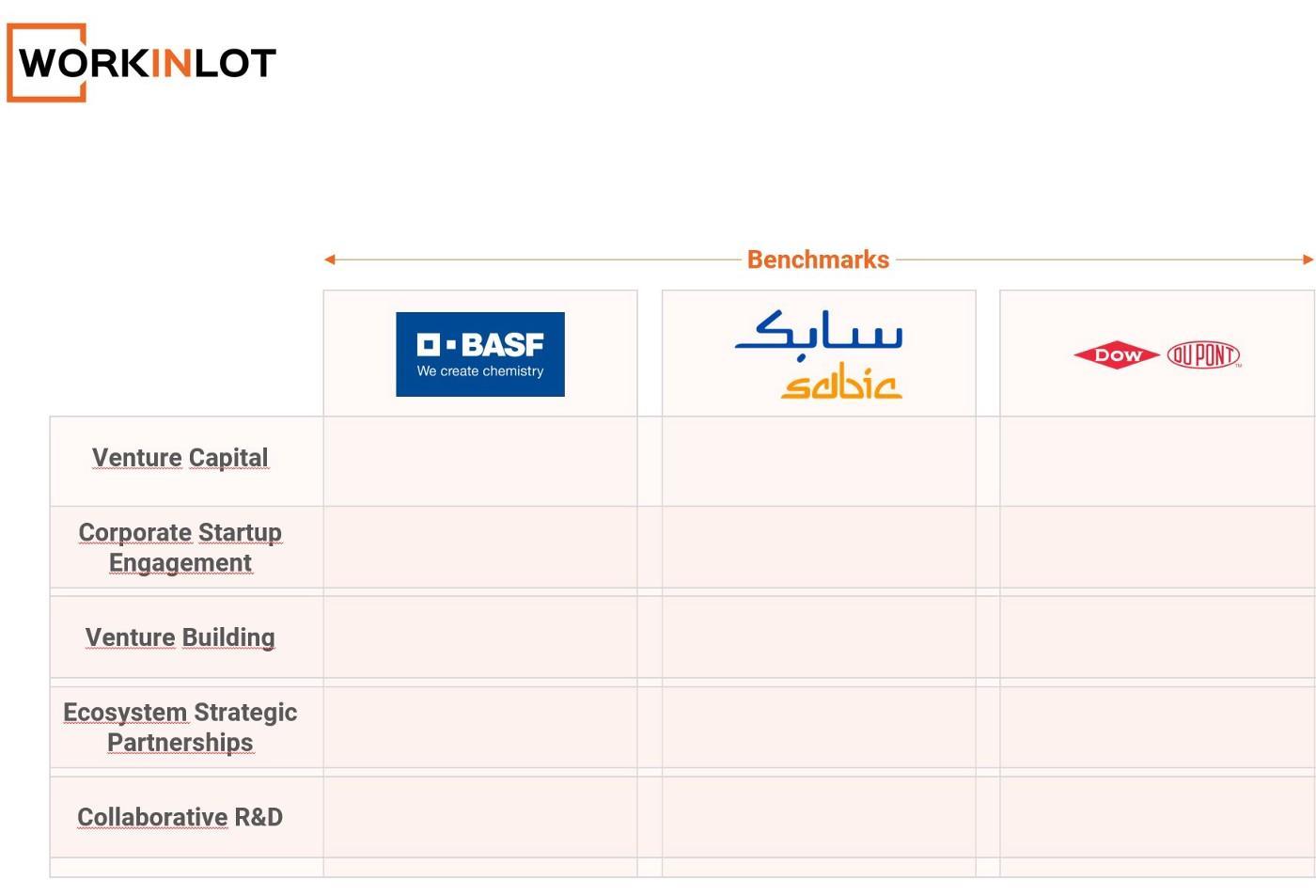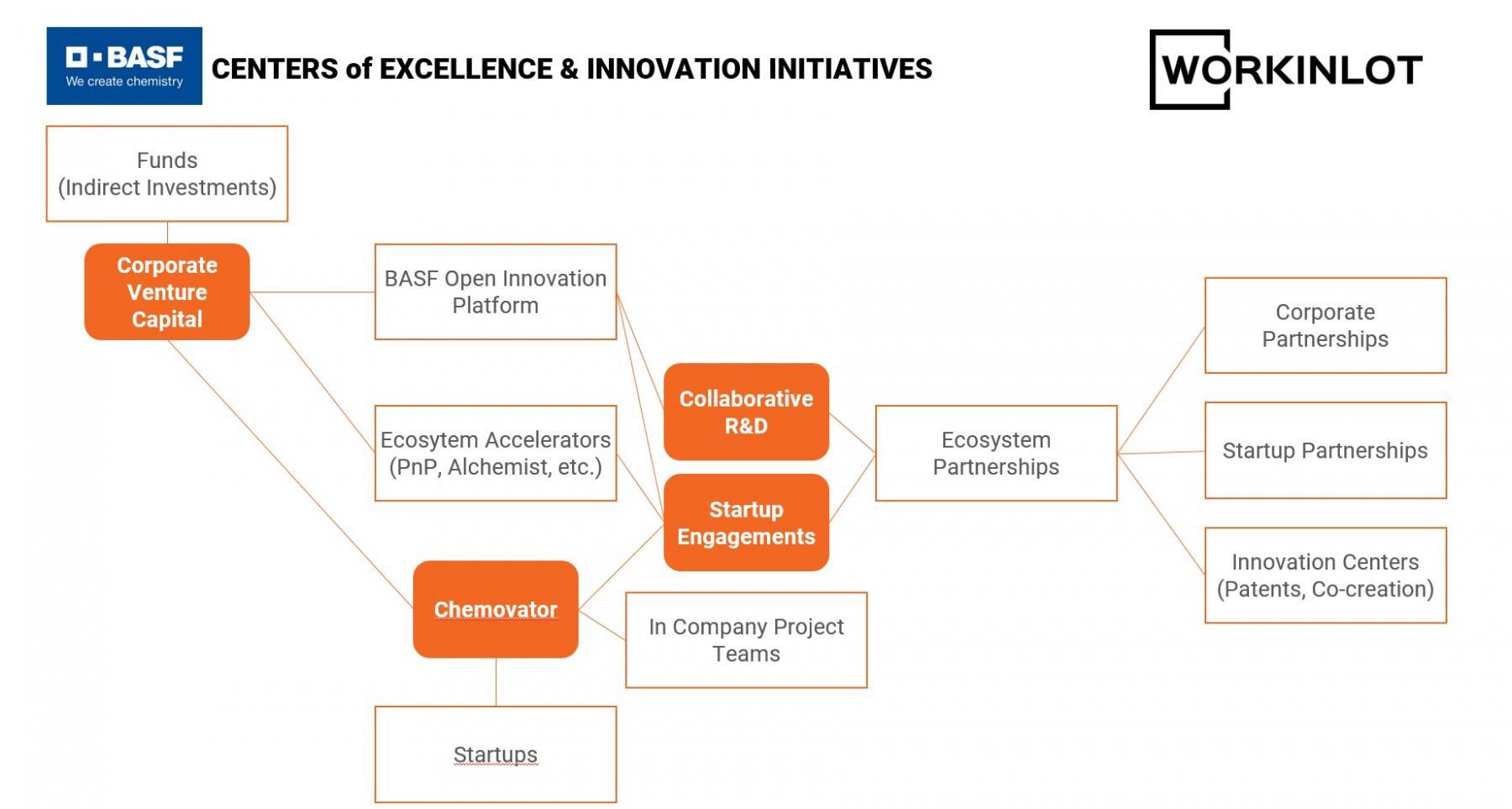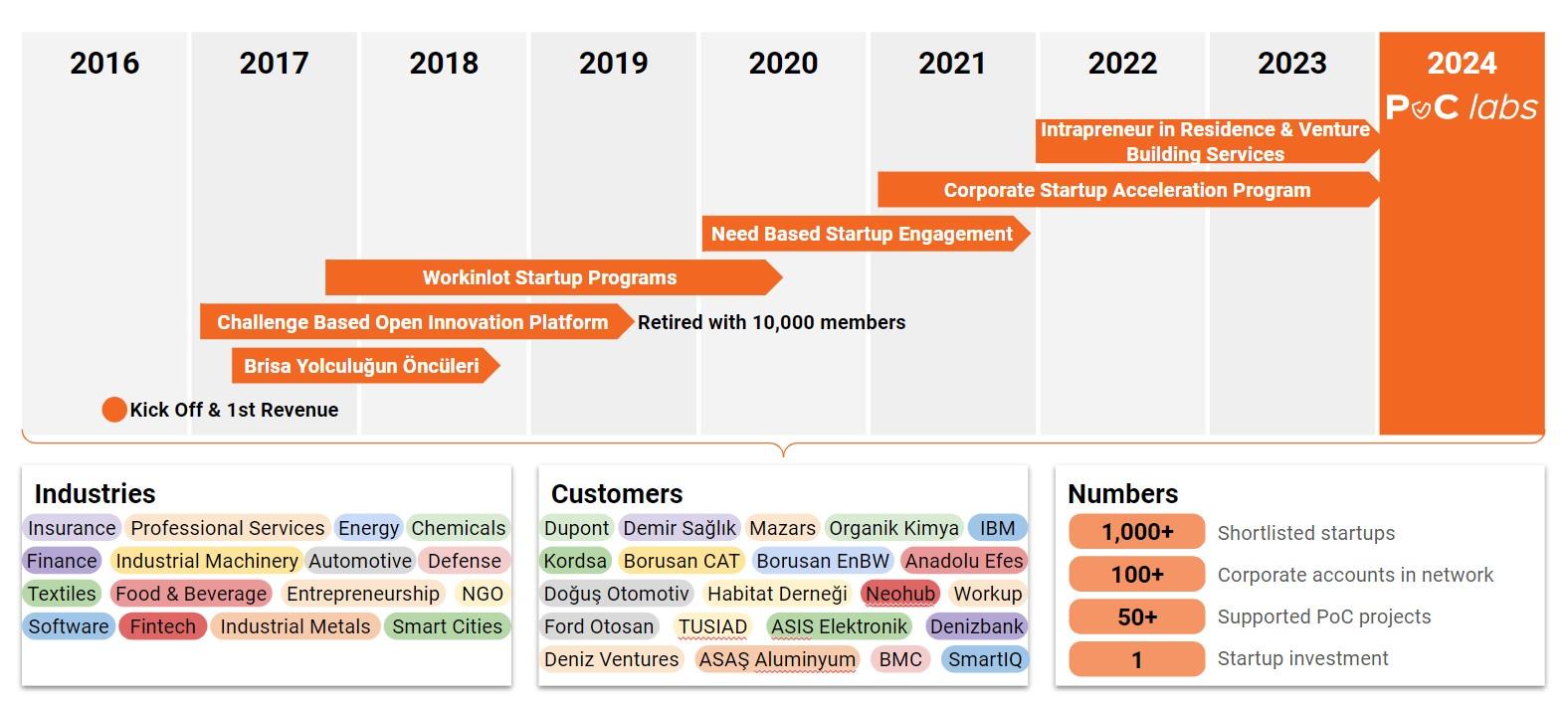
We prepare benchmark reports for companies, that help reveal sectoral innovation approaches. In these reports, we pay attention to innovation focus areas, how companies test new technologies, business models, and new markets. Also the different structures and methods that help them.
Companies create a corporate innovation ecosystem of internal and external stakeholders, by developing corporate innovation assets. (Workinlot Ecosystem Model)
Innovation assets, support the engagement of internal and external stakeholders working towards the same goals and scale the impact of collaborative innovation outcomes.
The main corporate innovation assets are corporate venture capital (CVC), open innovation programs and collaborations with technology producers, venture builder, platform or ecosystem strategic partnerships, corporate innovation centers, and R&D structures.
The following visual is an excerpt from a benchmark report. It lists the innovation assets created by companies helping us to cross-reference them.

The developed corporate innovation structures are not based on silos or different departmental logic.
These innovation structures enable the creation of new value, by leveraging structural processes that support each other.
The processes are shaped by the unique corporate strategy and priorities.
Why do corporations develop innovation assets?
Every company has unique reasons for innovation, directly related to its unique structure and goals.
Innovation assets mitigate the risk of innovation by sharing it through various levels of collaboration. Besides time and budget savings, these collaborations can create a strategic position for the organization in the exponential innovation world.
For a company with strong R&D expertise and capabilities, the core interaction center of innovation assets is the R&D structure. The traffic may sometimes involve developing ventures (venture building) with R&D and introducing them to the ecosystem, or other times utilizing open innovation platforms that can safely test patents and innovations to support R&D. (Reference Design - Open Innovation Platform Agro) These platforms can regularly pull external innovations to the organization, allow companies with strong R&D capabilities to asses and leverage the agility of external talent while innovating. (Turkish R&D Startups - Diamonds in the rough)
Other companies operating in a highly competitive market (red ocean), might prioritize testing new markets, business models, or disruptive technologies with startups before their competitors do. Corporate acceleration programs can facilitate the evaluation of external collaboration opportunities. (Corporate accelerators - Facts and Inefficiencies) Through these programs, companies can create a joint development funnel to combine their expertise with external innovative solutions. To establish such valuable collaborations, we recommend following metrics and processes that can measure the potential of a startup without exposing the company to undue risk. We prefer the PoC approach for these processes. (How PoCs Help Businesses Unlock Startup Potential)
A company's design criteria for innovation may be R&D or differentiation in the market.
Regardless of the design, corporate venture capital is the innovation asset that enables the capture and scale of the value created.
External solution providers, technology companies, or startups gain access to the company's expertise and knowledge. They see the problem firsthand and develop solutions leveraging corporate experiences. Through IP protection measures like NDAs, the company can transfer valuable know-how and resources during this corporate customer-centric development process. This enables the development of new products or services that can create strategic long-term gains for the company, such as new markets, customer data, and upsell opportunities.
To achieve long-term gains, outputs must be supported in a way that enables exponential growth, similar to startups.

Source: https://hbr.org/2016/07/how-to-create-an-exponential-mindset
Corporate structures typically expect linear growth.
The seemingly non-existent returns in the early stages of exponential growth may not look lucrative compared to corporate models. That is why, corporate venture capital funds are established for such seemingly risky projects.
How do innovation assets interact?

Creating innovation assets enables risk sharing through collaboration. To enhance the value of innovation assets, it is crucial to manage collaboration risks.
We recommend inclusive, transparent processes and objective evaluation methods to ensure that innovation assets remain in regular interaction with stakeholders and avoid silos. Processes such as corporate innovation programs can create an atmosphere that nurtures all innovation assets. They can foster awareness, communication, and joint development opportunities for solutions aligned with the organization's goals. To achieve this, we propose common, objective, and measurable processes for all stakeholders. (PoC Data and Business Intelligence)
A safe and collaborative environment is key to increasing the value of innovation assets.
Our ongoing analyses of different industries consistently highlight the benefits that companies gain from their innovation assets. (Workinlot Industry Analysis)

We design and execute the startup validation processes (PoC) for corporate clients. (Starting and Iterating: Corporate Open Innovation Design)
Through collaborative efforts, most companies we've worked with have developed unique open innovation strategies and established innovation teams.
This shared experience has enabled them to launch corporate venture capital funds, open innovation platforms, and venture builder initiatives.
If you're ready to embark on a similar journey, let's connect.